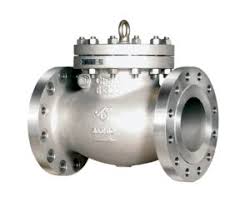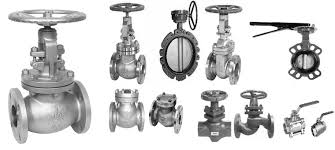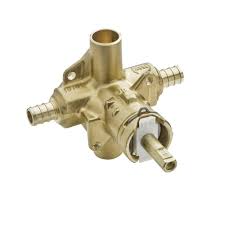Stainless Steel Valves

The Application of Stainless Steel Valves
Introducing Cameron’s superior range of stainless steel valves, including the precision-engineered stainless steel needle valve, versatile Apollo stainless steel ball valve, and reliable stainless steel flanged ball valves. Designed for demanding applications across industries, Cameron’s stainless steel valves offer exceptional durability, corrosion resistance, and performance. Whether it’s controlling flow with precision in high-pressure systems or ensuring reliable shut-off in corrosive environments, our stainless steel valves deliver unmatched reliability and longevity. With Cameron’s commitment to quality and innovation, customers can trust our stainless steel valves to meet their most stringent requirements, providing peace of mind and optimal performance in critical operations.
What Are The Types Of Stainless Steel Valves?
- Stainless Steel Ball Valves: These valves use a rotating ball with a bore to control flow. They offer excellent sealing properties and are suitable for a wide range of applications.
- Stainless Steel Gate Valves: Gate valves use a sliding gate to control flow. They provide tight shut-off and are often used in applications requiring infrequent operation.
- Stainless Steel Globe Valves: Globe valves have a globe-shaped body with a movable disk to regulate flow. They offer precise control and are commonly used in throttling applications.
- Stainless Steel Check Valves: Check valves allow flow in one direction while preventing backflow. They are essential for preventing reverse flow and protecting equipment.
- Stainless Steel Needle Valves: Needle valves have a long, tapered needle-like stem for fine flow control. They are commonly used in applications requiring precise flow regulation.
- Stainless Steel Butterfly Valves: Butterfly valves use a disc mounted on a rotating shaft to control flow. They offer quick operation and are suitable for large flow applications.
- Stainless Steel Diaphragm Valves: Diaphragm valves use a flexible diaphragm to regulate flow. They are ideal for handling corrosive or abrasive fluids.
What Is Stainless Steel Valves?
Stainless steel valves are mechanical devices used to control the flow of fluids in industrial processes. Constructed primarily from stainless steel, these valves offer exceptional durability, corrosion resistance, and longevity. They come in various types, such as ball valves, gate valves, and check valves, each serving specific functions in regulating fluid flow. Stainless steel valves find widespread applications across industries due to their reliability, versatility, and ability to withstand harsh operating conditions.
How to Select the Right Stainless Steel Valves?
Selecting the right stainless steel valves involves considering factors such as the type of fluid, pressure, temperature, flow rate, and compatibility with the application. Assess the specific requirements of the system and choose valves that meet these criteria, ensuring reliability, longevity, and optimal performance. Prioritize features such as corrosion resistance, seal quality, and operating mechanisms to ensure the selected valves meet the demands of the intended application.
Features of Stainless Steel Valves
- Corrosion Resistance:
- Stainless steel valves offer excellent resistance to corrosion, making them suitable for use in corrosive environments and with a wide range of fluids.
- Durability:
- Constructed from high-quality stainless steel, these valves are highly durable, capable of withstanding high temperatures, pressure, and harsh operating conditions.
- Versatility:
- Available in various types and configurations, including ball valves, gate valves, and check valves, stainless steel valves offer versatility to suit diverse applications and requirements.
- Seal Quality:
- With precision engineering and tight tolerances, stainless steel valves ensure superior seal quality, minimizing the risk of leakage and ensuring reliable operation.
- Temperature Resistance:
- They exhibit excellent temperature resistance, maintaining their structural integrity and performance even at extreme temperatures.
- Low Maintenance:
- Stainless steel valves require minimal maintenance, thanks to their corrosion-resistant properties and durable construction, reducing downtime and operational costs.
- Longevity:
- Due to their robust construction and resistance to wear and tear, stainless steel valves offer long service life, providing reliable performance over extended periods.
- Hygienic Properties:
- Stainless steel is inherently hygienic, making stainless steel valves suitable for use in industries where cleanliness and sanitation are critical, such as food and pharmaceuticals.
Advantages and Disadvantages of Stainless Steel Valves
Advantages:
- Corrosion Resistance: Stainless steel valves offer excellent corrosion resistance, making them suitable for use in corrosive environments.
- Durability: These valves are highly durable, capable of withstanding high temperatures, pressure, and harsh operating conditions.
- Versatility: Stainless steel valves come in various types and configurations, offering versatility to suit diverse applications and requirements.
- Hygienic Properties: Stainless steel is inherently hygienic, making stainless steel valves suitable for use in industries where cleanliness and sanitation are critical.
Disadvantages:
- Cost: Stainless steel valves tend to be more expensive compared to valves made from other materials, which may increase initial investment costs.
- Hardness: While stainless steel is durable, its hardness can make machining and fabrication more challenging, potentially increasing manufacturing costs.
- Magnetic Properties: Some grades of stainless steel may exhibit magnetic properties, which can affect certain applications where non-magnetic materials are required.
- Weight: Stainless steel valves are typically heavier than valves made from other materials, which may require additional support or reinforcement in some installations.

The Specifications of Stainless Steel Valves
| Specification | Details |
|---|---|
| Type | Ball Valve |
| Ball Material | Stainless Steel |
| Attachment Type | Threaded, Flanged, Welded |
| Thread Standard | NPT (National Pipe Thread), BSPP, BSPT, DIN |
| Thread Size | 1/4 inch – 4 inches |
| Body Material | Stainless Steel (316/316L, 304/304L) |
| Safe for Use With | Water, Oil, Gas, Chemicals |
| Handle Type | Lever, Gear, Actuated |
| Handle Material | Stainless Steel, Carbon Steel, Aluminum |
| Maximum Working Pressure (psi) | 1000 psi – 6000 psi |
| Maximum Working Pressure (bar) | 69 bar – 414 bar |
| Operating Pressure | 0 psi – maximum working pressure |
The Installation Steps for Stainless Steel Valves
- Preparation:
- Gather all necessary tools and equipment, including wrenches, pipe thread sealant, and pipe tape.
- Ensure the work area is clean, dry, and free from debris.
- Valve Selection:
- Choose the appropriate stainless steel valve type, size, and configuration for the specific application and system requirements.
- Valve Positioning:
- Identify the ideal location for the valve in the piping system, considering accessibility and operational requirements.
- Valve Mounting:
- Securely mount the stainless steel valve to the pipeline using appropriate bolts and gaskets.
- Ensure proper alignment of the valve to facilitate smooth operation.
- Attachment Connection:
- Connect the stainless steel valve to the piping system using threaded, flanged, or welded connections, depending on the valve design and system requirements.
- Apply pipe thread sealant or pipe tape to threaded connections to ensure a secure seal.
- Actuator Installation:
- If the stainless steel valve includes an actuator, install it according to the manufacturer’s instructions.
- Connect any necessary wiring or tubing for actuation and control.
- Pressure Testing:
- Conduct a pressure test on the valve and piping system to ensure there are no leaks or defects.
- Follow industry-standard procedures for pressure testing, including gradually increasing pressure and monitoring for leaks.
- Final Inspection:
- Inspect the installed stainless steel valve for proper alignment, tightness of connections, and overall functionality.
- Verify that all components are installed correctly and securely.
- Documentation:
- Maintain detailed records of the installation process, including valve specifications, pressure test results, and any adjustments made during installation.
- Update system documentation and diagrams to reflect the newly installed stainless steel valve.
- Training:
- Provide training to relevant personnel on the operation, maintenance, and troubleshooting of the stainless steel valve system.
The Operation Theory of Stainless Steel Valves
The operation theory of stainless steel valves involves precision engineering and reliable mechanisms designed to control fluid flow in various applications. Manufacturers like Cameron employ advanced techniques to ensure optimal performance and durability. Stainless steel valve manufacturers integrate materials and technologies to enhance corrosion resistance and withstand harsh environments, ensuring long-term reliability.
The operation theory extends to specialized valves like the 3-way stainless steel ball valve. This valve features a ball with multiple ports, allowing for versatile flow control options. By rotating the ball, operators can direct flow between different pathways, providing flexibility in fluid distribution or diversion.
In essence, the operation theory of stainless steel valves, including the 3-way ball valve, emphasizes precision, reliability, and adaptability, meeting diverse industrial needs with efficiency and durability.
The Parameters Chart of Stainless Steel Valves
| Parameter | Material |
|---|---|
| Valve Body | Stainless Steel (316/316L, 304/304L, etc.) |
| Valve Seat | PTFE (Polytetrafluoroethylene), Metal (Stainless Steel, Brass, etc.) |
| Valve Ball | Stainless Steel |
| Valve Stem | Stainless Steel |
| Valve Actuator | Stainless Steel, Carbon Steel, Aluminum |
| Gaskets | PTFE, Graphite, EPDM, NBR (Nitrile Butadiene Rubber), etc. |
| Bolts and Nuts | Stainless Steel, Carbon Steel, Alloy Steel, Brass, etc. |
| Handle | Stainless Steel, Carbon Steel, Aluminum, Plastic |
| Seal | PTFE, Viton, EPDM, NBR, Metal (Stainless Steel, Brass, etc.) |
| Bonnet | Stainless Steel, Carbon Steel, Aluminum, Brass, etc. |

